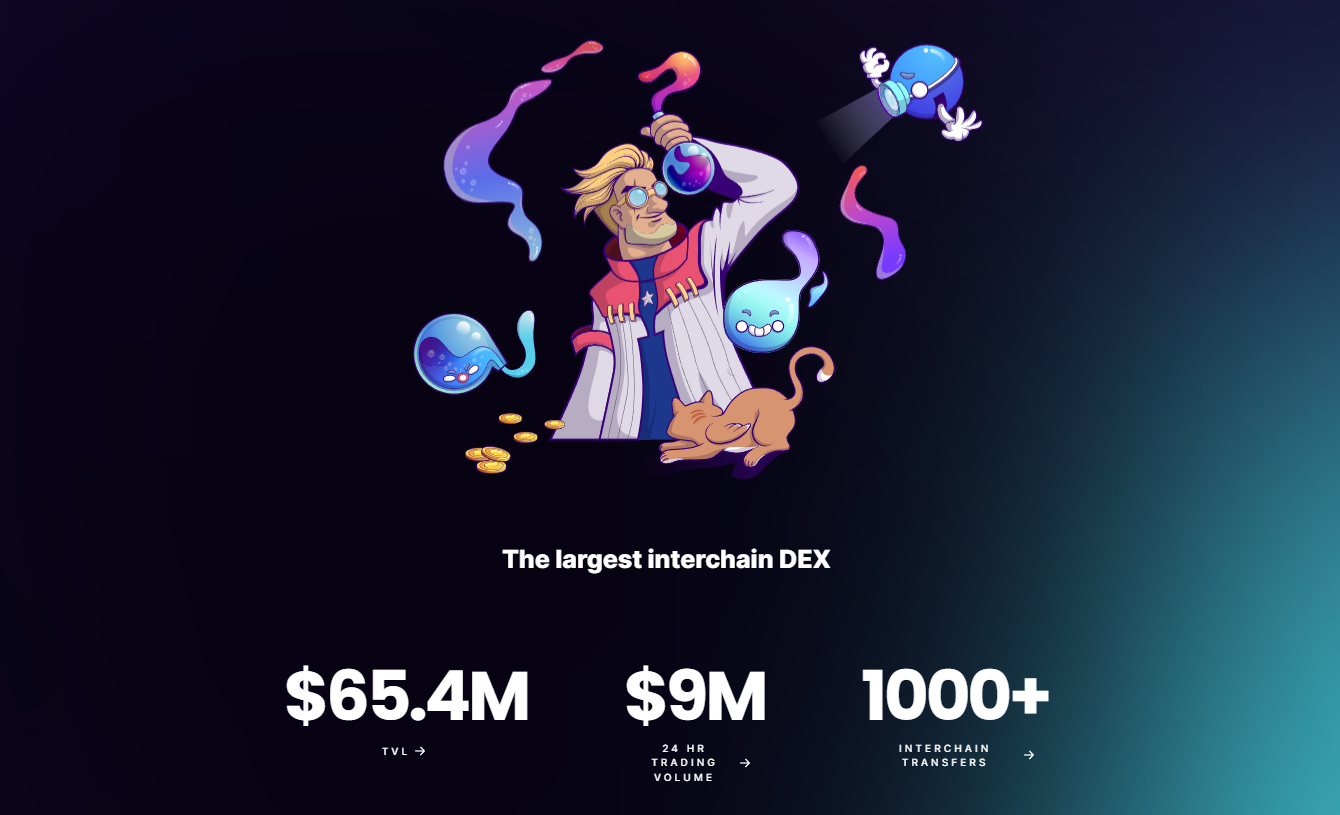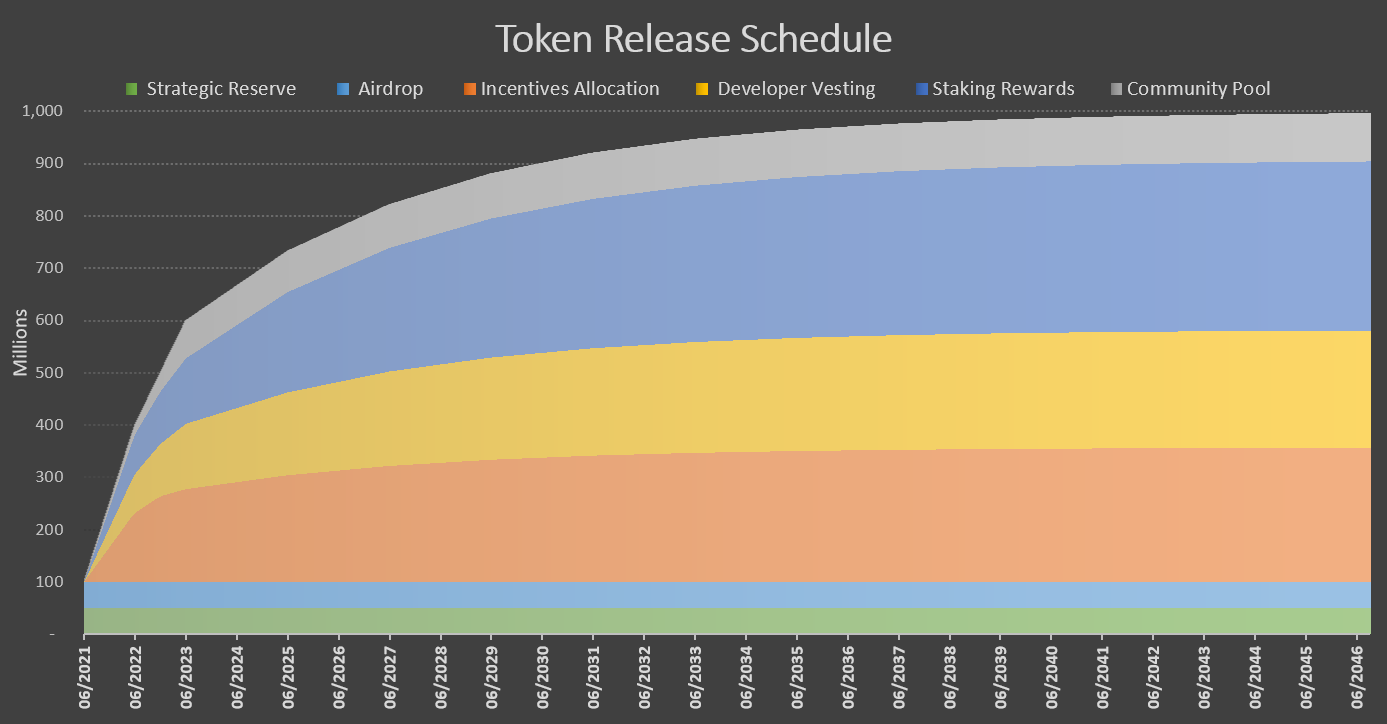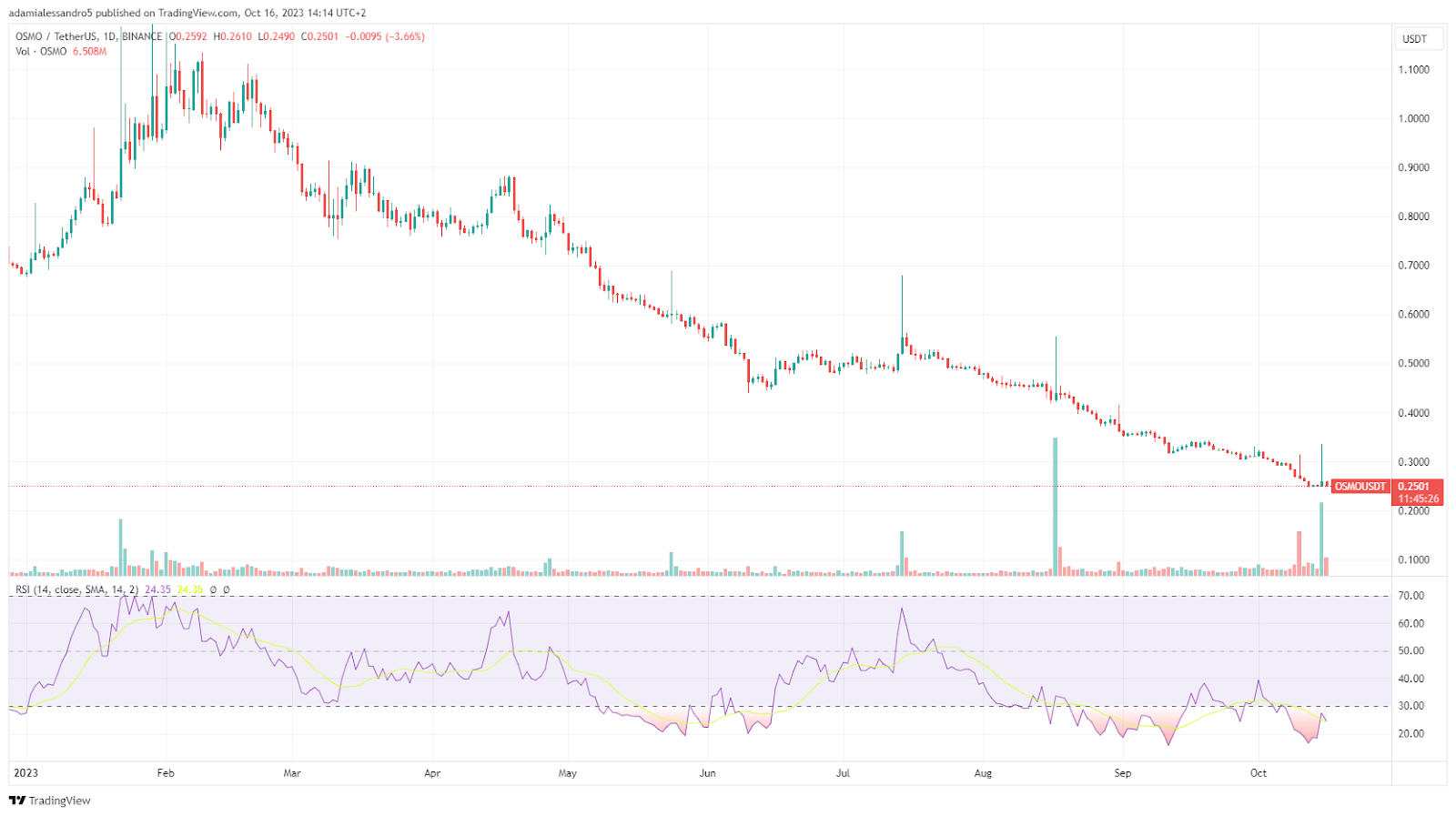In this article, we take a look at what the Osmosis crypto exchange interchain protocol is and how it works, which operates via the decentralised network of the same name within the Cosmos ecosystem.
In the last few days, this platform has experienced a router issue that has resulted in scalability and price accuracy issues within DEX.
In this context, we see the challenges that Osmosis is facing and will have to face in order to become the dominant decentralised application in the DeFi landscape.
We also see the development of the OSMO token; used for project governance and staking within the platform.
Full details below.
Crypto Update: What is Osmosis DEX and how does it work?
Osmosis is a DEX, i.e. a platform that enables crypto exchange via a non-custodial infrastructure, operating within the Cosmos SDK universe.
However, Osmosis is also a blockchain, more specifically one of 46 interchain networks that communicate with each other via Cosmos’ well-known Inter-Blockchain Communication (IBC) protocol.
Within this vast ecosystem, customised chains and different tokens can interact with each other using the Osmosis application, which provides advanced tools for creating native interchain applications and smart contracts.
The AMM (Automated Market Making) structure allows tokens listed on the platform to be placed in liquidity pools, which are conceptually similar to the exchange pairs found on centralised exchanges such as Binance and Coinbase.
In this pool, users can deposit one of the two tokens that make up the pool, helping to increase liquidity for traders while earning a cut of the transaction fees.
The Osmosis app elevates this infrastructure architecture by allowing LP users themselves to create their own pools by locking them with unique parameters, and to perform special actions such as ‘superfluid staking’, which allows crypto stakers such as ATOM and OSMO to simultaneously participate in the role of liquidity providers with maximum capital efficiency.
The heterogeneity and sovereignty that the platform offers its users in creating customisable liquidity pools, combined with the interoperability that exists on Cosmos, makes the user experience unique in every way.
Osmosis currently has an LTV of $65.4 million, a trading volume of $9 million in the last 24 hours and a total of more than 1,000 executed interchain transfers.

Osmosis router bug puts crypto trading platform to the test
Last week, the crypto interchain trading platform Osmosis experienced some problems after some pools were added.
In particular, several users of the decentralised application reported being unable to perform swaps and other transactions due to a bug.
DEX would not read users’ balances and would not allow them to interact with smart contracts, rendering it unusable.
For example, one user shared his unfortunate situation on X, where despite having a balance of more than 605,000 OSMO tokens, he was unable to sell even 500 of them for USDC.
I can't even sell 500 $OSMO without it telling me insufficient liquidity what is going on @osmosiszone ? pic.twitter.com/B6Hbupyoky
— Mike Richards ✡️ (@MikeR_AM) October 12, 2023
The Osmosis team reacted quickly, alerting the X community to the browser router bug and bringing the situation back to normal within hours.
In the same social media post, the team explained that unfortunately the addition of CL pools can sometimes cause scalability and accuracy issues within their platform.
When trying to manage a structure with one of the most competitive times in the market in terms of generating asset prices (around 200ms) on DEX, it is unfortunate that small errors are observed.
However, the team themselves have stated that they are aware of this limitation and are working diligently to overcome it once and for all, with the solution seemingly close at hand.
Dear Osmosis Community,
— Osmosis ⚡️🧪 (@osmosiszone) October 13, 2023
We hear your feedback regarding the router, and we want you to know that the team is fully aware of the issues at hand.
Rest assured, fixing this is our number one priority. A solution is already on the way! 🤝
Flaws in the scalability and accuracy of price feeds threaten to undermine Osmosis’ innovation, with users of the crypto exchange platform likely to migrate to other, more ‘reliable’ competitors.
So far, this small bug does not seem to have sparked community anger or capital flight within the decentralised pools.
In any case, it is crucial that Osmosis fixes this vulnerability once and for all so that it can continue on its path of building and expanding the Cosmos ecosystem.
Analysis and development of the OSMO token
Osmosis also has an internal token within its ecosystem called OSMO, which serves several functions.
Firstly, the crypto is used to vote on governance proposals that are published by the community from time to time, helping to create a decentralised structure. Obviously, the more tokens a user owns, the greater their voting power.
OSMO is then used as a staking resource, allowing users to contribute to the security of the Proof-of-Stake network while earning a return on their investment.
One area of staking where OSMO is particularly efficient is “superfluid staking”, where users can place their cryptos as a supply of liquidity and at the same time use them to protect the interchain from cyber-attacks.
The first Osmosis token pool to enable superfluid staking is the ATOM/OSMO pool, which is the largest Osmosis cryptographic staking pool in terms of volume and includes both the OSMO and Cosmos ATOM tokens.
The coin supply is set at 1 billion units, of which 49.26% are already circulating in the markets, while the remaining 50.74% are in vesting and will be distributed to the various participants in the decentralised network over the next 23 years.
Inflation is present in OSMO, as in any PoS token, but it is managed intelligently, reducing the amount of cryptocurrency put on the market year after year.

In terms of price action, although the news of the DEX router bug did not affect the value of OSMO in any way, it should be noted that the crypto is suffering from heavy selling pressure.
Since the beginning of the year, after a small rally that saw the price of the coin rise more than 60% in less than 50 days, things have gone from bad to worse.
Since February, OSMO has lost around 77% of its value, falling from $1.1 to its current level of $0.25.
The weakness of the Osmosis crypto is not so much the inflationary factor, which, as mentioned, is largely under control, but rather the shortage of the utility space that the resource covers.
Users have no particular economic incentive to hold the token, except to vote on a governance proposal or to create a custom pool.
In the new tokenomics released in June this year, the project team tried to solve this problem by increasing the yield of stakers who decide to hold OSMO with some of the incentives of LPs and the community pool.
However, the graph so far speaks for itself and does not seem to indicate any kind of reversal.
Until stable price support is found, it will be difficult to establish a medium-term uptrend for OSMO.
On a more speculative note, there was a sudden increase in trading volume during the day yesterday, which could be a warning for some short rallies, given that the RSI is also in the oversold zone.

 en.cryptonomist.ch
en.cryptonomist.ch
